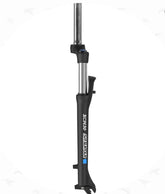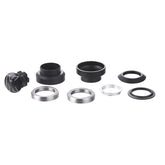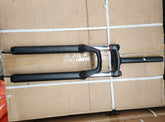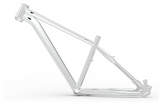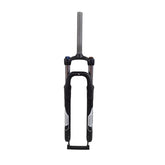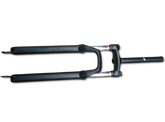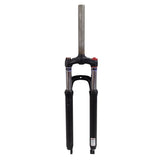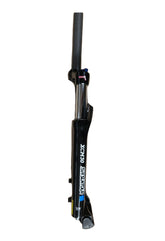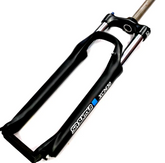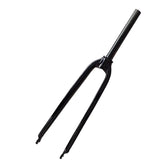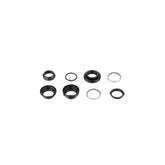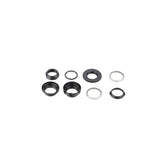Filter
16 results
15
- 10
- 15
- 20
- 25
- 30
- 50
Best selling
- Featured
- Best selling
- Alphabetically, A-Z
- Alphabetically, Z-A
- Price, low to high
- Price, high to low
- Date, old to new
- Date, new to old
Sort
Sort by:
- Featured
- Best selling
- Alphabetically, A-Z
- Alphabetically, Z-A
- Price, low to high
- Price, high to low
- Date, old to new
- Date, new to old
-
Suspension Fork for Bicycle (Threaded) * Front Suspension Fork (Shocker) Threaded for 26"* 40 mm travel* Disc brakes compatible / v-Brakes Compatible* Maximum tire width - 2.35" Column length: 180mm
- Rs. 1,550.00
- Rs. 1,550.00
- Unit price
- / per
-
The SR Suntour XCM Suspension Fork features a Hydraulic Lockout system for a smooth, efficient ride. This efficient, lightweight fork is designed for ambitious cross-country and touring cyclists who demand performance. The Hydraulic Lockout offers a wide range of compression damping, allowing you to...
- Rs. 7,600.00
- Rs. 7,600.00
- Unit price
- / per
-
- Rs. 750.00
Rs. 800.00- Rs. 750.00
- Unit price
- / per
-
29 - Lockout Suspension Steel
- Rs. 1,700.00
Rs. 2,200.00- Rs. 1,700.00
- Unit price
- / per
-
100% Alloy suitable for most bicycles with wheel sizes 26, 27.5, and 29 inches. Easy to fit and is strong and durable to withstand the maximum weight.
- Rs. 4,500.00
Rs. 7,500.00- Rs. 4,500.00
- Unit price
- / per
-
Mechanical Lockout PRE-Load Adjust Disc Brake Compatible Pre-drilled mudguard eyelet holes Specification: Brand - ZOOM Model - 389A Recommended Wheel Size - 700c/ 29T Maximum Tire Size Compatibility - 29x2.35 Travel - 80 mm Options - M L/O Spring - Coil Spring Crown -Forged...
- Rs. 4,799.00
- Rs. 4,799.00
- Unit price
- / per
-
27.5 - Lockout Suspension Steel
- Rs. 1,650.00
Rs. 2,100.00- Rs. 1,650.00
- Unit price
- / per
-
Suspension Lockout Preload Fork 50mm Travel Front Suspension Fork (Threadless) Mechanical Lockout PRE-Load Adjust Disc Brake Compatible Pre-drilled mudguard eyelet holes Recommended Wheel Size - 700c/ 29T Maximum Tire Size Compatibility - 29x2.35 Travel - 50 mm Spring - Coil Spring Material - Steel...
- Rs. 2,549.00
- Rs. 2,549.00
- Unit price
- / per
-
Model: XCM Offset 46mm available Production date 2023 Steerer tube diameter 1-1/8" Travel 100mm Right Side MLO Left Side COIL with Preload adjuster Crown AC4C Pitch 130mm Lower Al Alloy Brake Postmount 160mm Direct Steerer tube 1-1/8" (TS), STKM Stanchion tube finish STKM, Cr-plating Axle 9-100mm Dropout Intended Use Casual MTB Recommended Wheel Size - XCM 29 -...
- Rs. 8,599.00
- Rs. 8,599.00
- Unit price
- / per
-
- Rs. 5,999.00
Rs. 8,999.00- Rs. 5,999.00
- Unit price
- / per
-
Feature : Front Rigid Fork Steel Type: Threadless Material: Steel Column length: 210 mm Weight: 1128 g Color: Black Recommended Wheel Size: 26T Wheel / 700c Wheel Maximum Tire Size Compatibility: 26x1.95 / 700x35c Disc Brakes Compatible
- Rs. 1,999.00
- Rs. 1,999.00
- Unit price
- / per
-
- Rs. 800.00
Rs. 870.00- Rs. 800.00
- Unit price
- / per
-
● Height: 33.0±1mm ● Finish: CP/ED NO PART NAME MATERIAL SPECIFICATION Q'TY 1 Lock Nut Carbon Steel 1'' X 24T 1 2 Washer Steel 2mm 1 3 Top Cone Carbon Steel 1'' X 24T 1 4 Ball Retainer Carbon Steel 5/32'' X 16 2...
- Rs. 750.00
Rs. 800.00- Rs. 750.00
- Unit price
- / per
-
29 Threadless Suspension
- Rs. 1,295.00
- Rs. 1,295.00
- Unit price
- / per
-
29 Lockout Suspension
- Rs. 2,232.00
- Rs. 2,232.00
- Unit price
- / per




